Fearsome Koa Warriors Fought For Spiritual Energy And Mana, The Life-Force
Ellen Lloyd - AncientPages.com - Most ancient warriors fought to defend their territories, win a battle, or an entire war. The Hawaiian Koa warriors engaged in combat with the ultimate goal of obtaining spiritual energy and a life force known as Mana. This was much more important to them than killing their enemy.
Koa Warriors Practiced The Martial Art Lua
Becoming a Koa warrior was difficult; only the best noble fighters were accepted. Over time, their unique combat style developed into the true Koa martial art.
Portrait of Koa Warrior Kamehameha. Credit: Public Domain
Their name originated from the tree they used to fashion their weapons, the Koa tree. Before a Koa warrior could fight, he had to prepare his body for battle. Koa warriors never wore helmets or shields because armor was considered a cowardly means of protection. Instead, they prepared their bodies so that the enemy would have difficulties getting a proper grip. This was done by shaving the body and applying natural oils.
The Hawaiian Koa warriors relied on the martial art Lua to stay in perfect shape. Mastering Lua took many years, and Koas' fighting techniques were very effective, so it's not surprising their secrets were never revealed to outsiders.
Ancient skilled Koa warriors who mastered Lua were "capable of snapping fingers, wrists, elbows, dislocating shoulders, and breaking their opponent's neck in one fluid sequence." 1
One of the most famous Koa warriors of all time was Kamehameha (1758 – 1819), the founder and first ruler of the Kingdom of Hawaii.
Mana – The Life-Force In Hawaiian Beliefs
The concept of Mana has always been very significant in the beliefs of the people of Hawaii. For example, traditional Hawaiians believe that "their sacred stones are alive, that one can feel a heartbeat or the movement of blood as it courses through the veins of lava-formed rocks. Stones in Hawaii are believed to be inhabited by the Mana, the life-force of ancient ancestors, and hence must be protected and treated with great respect. 2
Koa warriors shared similar beliefs when engaging in battle. They believed that victories in battle increased their own Mana and, in return, decreased that of the defeated enemy.
Mana, the life-force is everywhere. It can be found in stones, water, and all living beings. Credit: Public Domain
"Outside of death lays a much worse consequence in the eyes of the Koa, if not killed in battle, the defeated enemy falls from the top of their respective society to mere lowly slaves of their enemies, the very bottom of the islands hierarchies." 1
Koas' Martial Art Was Banned
Using martial arts as a means of fighting was common in the ancient world. Hundreds of years ago in Brazil, West African descendants invented a martial art known as Capoeira, and runaway slaves used Capoeira to defend themselves against attackers.
In the Ulster Cycle of Irish mythology, Scathach, the 'Shadowy One,' was a mighty warrior queen and legendary martial arts teacher who taught the great Irish hero Cuchulainn how to become a warrior.
Viking warriors developed a martial arts system called Glima that men and women of all ages practiced. The tradition of Glima has been kept alive, and the sport is still very popular in Scandinavia.
Kamehameha Day Floral Parade. Credit: Mark Miller - CC BY-SA 4.0
In time, Koas' martial art became regarded as very dangerous, and finally, in the 19th century, it "was suppressed and forced underground. It was secretly passed from generation to generation of native Hawaiians striving to keep their culture and martial art alive.
Today, it has reemerged in the hands of the few remaining grandmasters, and its techniques are being brought back to life. They teach their students the sacred sequences of strategic bone-breaking moves that cripple the enemy."
Fortunately, the world has managed to preserve the legacy of these fearsome but exceptionally accomplished Koa warriors.
Updated on June 19, 2024
Written by Ellen Lloyd – AncientPages.com
Copyright © AncientPages.com All rights reserved. This material may not be published, broadcast, rewritten or redistributed in whole or part without the express written permission of AncientPages.com
Expand for references- Adrian Ambrose - Hawaiian History - Ruthless Koa Warriors: The Islands of Hawaii: Elite Warriors
- Gay, Lahe'enae. "Sacred Stones of Hawaii." Archaeology44, no. 4 (1991): 40-45.
More From Ancient Pages
-
 Loss Of Rainforests, Grasslands In Southeast Asia Caused Extinction Of Megafauna And Ancient Humans
Archaeology | Oct 10, 2020
Loss Of Rainforests, Grasslands In Southeast Asia Caused Extinction Of Megafauna And Ancient Humans
Archaeology | Oct 10, 2020 -
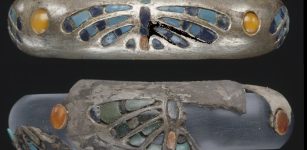 Mystery Of Egyptian Queen Hetepheres I’s Bracelets Solved!
Archaeology | Jun 2, 2023
Mystery Of Egyptian Queen Hetepheres I’s Bracelets Solved!
Archaeology | Jun 2, 2023 -
 Secret Story Of The Ancient Bak’Ti Gods And Their Battle To Gain Control Over Humanity And Planet Earth – Told By Shamans
Ancient Mysteries | Jun 23, 2018
Secret Story Of The Ancient Bak’Ti Gods And Their Battle To Gain Control Over Humanity And Planet Earth – Told By Shamans
Ancient Mysteries | Jun 23, 2018 -
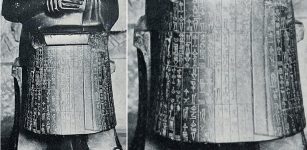 Statue Of Gudea: The King-Priest Of Sumerian City Of Lagash In Southeast Mesopotamia
Featured Stories | Aug 14, 2016
Statue Of Gudea: The King-Priest Of Sumerian City Of Lagash In Southeast Mesopotamia
Featured Stories | Aug 14, 2016 -
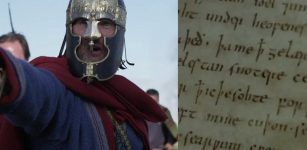 Beowulf Is Much Older Than Previously Thought And Not An English Poem – Professor Says
Linguistic Discoveries | Jan 6, 2020
Beowulf Is Much Older Than Previously Thought And Not An English Poem – Professor Says
Linguistic Discoveries | Jan 6, 2020 -
 Why Were Uncomfortable Poulaines High Fashion During The Middle Ages?
Ancient History Facts | Feb 19, 2025
Why Were Uncomfortable Poulaines High Fashion During The Middle Ages?
Ancient History Facts | Feb 19, 2025 -
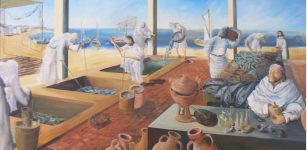 Mediterranean Hunter-Gatherers Relied On Marine Resources More Than Previously Thought
Archaeology | Feb 22, 2023
Mediterranean Hunter-Gatherers Relied On Marine Resources More Than Previously Thought
Archaeology | Feb 22, 2023 -
 2,000-Year-Old Factory Producing Roman Fish Sauce Unearthed In Ashkelon, Israel
Archaeology | Jan 7, 2020
2,000-Year-Old Factory Producing Roman Fish Sauce Unearthed In Ashkelon, Israel
Archaeology | Jan 7, 2020 -
 5,000-Year-Old Tavern With Food Remains Discovered In The Ancient Mesopotamian City Lagash
Archaeology | Feb 2, 2023
5,000-Year-Old Tavern With Food Remains Discovered In The Ancient Mesopotamian City Lagash
Archaeology | Feb 2, 2023 -
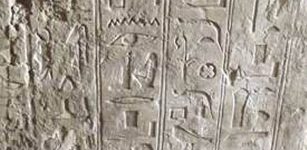 Tomb of the 26th dynasty vizier of Upper Egypt discovered in South Assassif, Luxor
Civilizations | Aug 31, 2015
Tomb of the 26th dynasty vizier of Upper Egypt discovered in South Assassif, Luxor
Civilizations | Aug 31, 2015 -
 Orichalcum: Mysterious Metal Linked To Legendary Atlantis Discovered In Shipwreck
Archaeology | Jan 8, 2015
Orichalcum: Mysterious Metal Linked To Legendary Atlantis Discovered In Shipwreck
Archaeology | Jan 8, 2015 -
 Biblical Jonah Visits Nineveh – The Evil City
Biblical Mysteries | Nov 9, 2018
Biblical Jonah Visits Nineveh – The Evil City
Biblical Mysteries | Nov 9, 2018 -
 On This Day In History: SS City of Glasgow Leaves Liverpool And Is Never Seen Again – On March 1, 1854
News | Mar 1, 2017
On This Day In History: SS City of Glasgow Leaves Liverpool And Is Never Seen Again – On March 1, 1854
News | Mar 1, 2017 -
 Rare Iron- And Viking-Age Mortuary Houses Discovered In Norway
Archaeology | Aug 27, 2024
Rare Iron- And Viking-Age Mortuary Houses Discovered In Norway
Archaeology | Aug 27, 2024 -
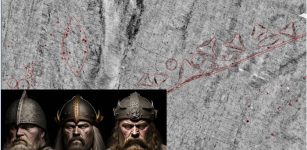 Radar Discovery Of Unknown Viking Age Stone Ship, Burial Mounds And Houses In The Trondheim Fjord
Archaeology | Mar 28, 2023
Radar Discovery Of Unknown Viking Age Stone Ship, Burial Mounds And Houses In The Trondheim Fjord
Archaeology | Mar 28, 2023 -
 4,500-Year-Old Lost ‘Sun Temple’ Dedicated To God Ra Unearthed In Abu Gorab Necropolis
Archaeology | Aug 4, 2022
4,500-Year-Old Lost ‘Sun Temple’ Dedicated To God Ra Unearthed In Abu Gorab Necropolis
Archaeology | Aug 4, 2022 -
 The Ebers Papyrus – Most Famous Plant Medicine ‘Encyclopedia’ Of Ancient Egypt
Civilizations | Feb 3, 2016
The Ebers Papyrus – Most Famous Plant Medicine ‘Encyclopedia’ Of Ancient Egypt
Civilizations | Feb 3, 2016 -
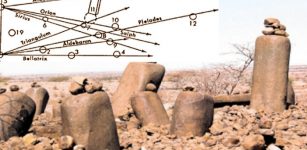 Namoratunga – Kenya’s Fascinating Megalithic Site Oriented Toward Specific Stars And Constellations
Featured Stories | Jul 6, 2021
Namoratunga – Kenya’s Fascinating Megalithic Site Oriented Toward Specific Stars And Constellations
Featured Stories | Jul 6, 2021 -
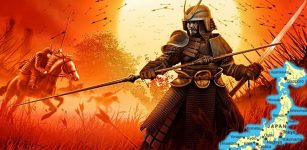 The Bushido Code: Centuries-Old Unwritten Code For Ideal Samurai Warrior
Featured Stories | Dec 26, 2016
The Bushido Code: Centuries-Old Unwritten Code For Ideal Samurai Warrior
Featured Stories | Dec 26, 2016 -
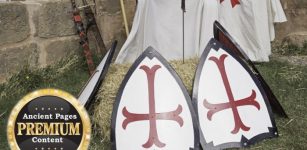 Strange Engraving Made By Knights Templar In French Village – It Doesn’t Make Sense Or Does It? – Part 2
Ancient Mysteries | Oct 9, 2019
Strange Engraving Made By Knights Templar In French Village – It Doesn’t Make Sense Or Does It? – Part 2
Ancient Mysteries | Oct 9, 2019



